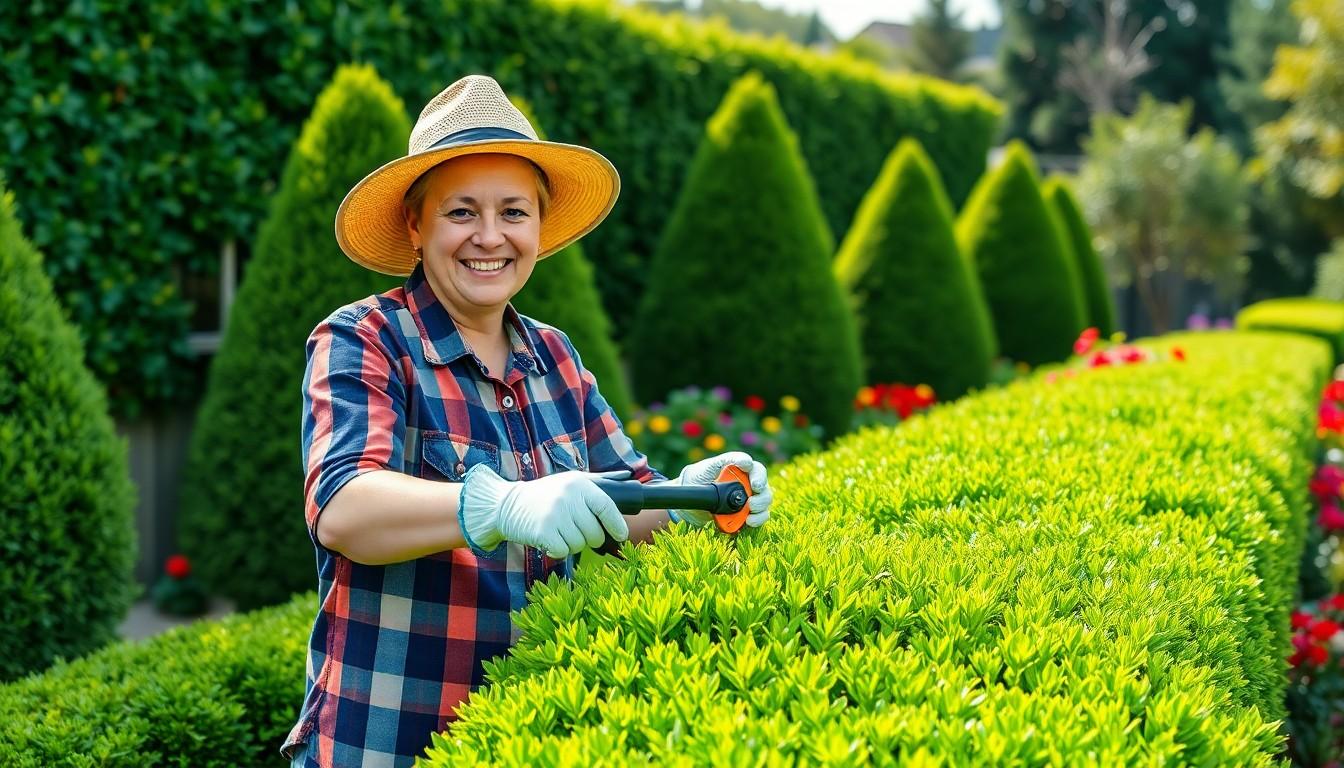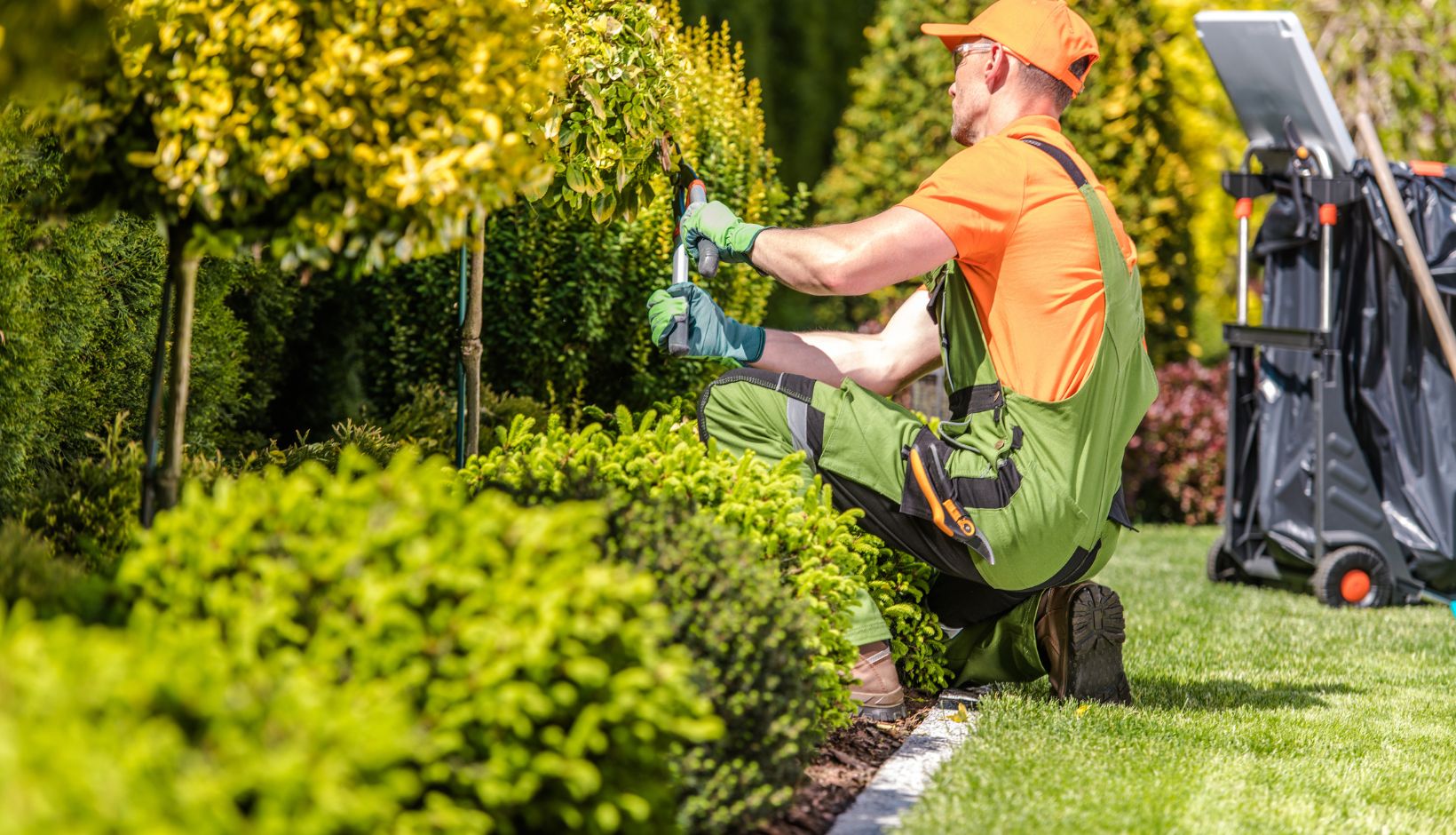A well-manicured lawn isn’t just a status symbol; it’s a ticket to neighborhood fame. Picture this: a yard so pristine that even the squirrels stop to take notes. Landscaping trimming is the secret sauce that transforms ordinary gardens into eye-catching masterpieces. It’s not just about snipping a few branches; it’s about crafting a lush paradise that’ll make your neighbors green with envy.
Landscaping Trimming
Landscaping trimming plays a crucial role in maintaining the aesthetic appeal and health of outdoor spaces. Proper trimming enhances the overall design of gardens and yards, allowing plants to flourish. Regular trimming prevents overgrowth and promotes air circulation, which is essential for plant health.
Different types of trimming techniques cater to various plant species. Precision trimming shapes shrubs and hedges, creating clean lines and defined edges. Topping, on the other hand, encourages bushier growth in certain plants. Thinning focuses on removing excess branches to improve light penetration and air flow.
Tools used in landscaping trimming vary based on the job’s requirements. Hand pruners work well for small branches, while shears efficiently handle larger shrubs. Electric trimmers provide speed and efficiency for extensive areas, making them suitable for larger properties.
Timing also impacts the effectiveness of trimming. Spring or early summer is ideal for many plants, as active growth begins. Certain flowering shrubs benefit from late summer trimming, promoting a more robust bloom in the following year. Adapting trimming schedules based on plant types ensures healthy growth and vibrant displays.
Professional landscapers often incorporate trimming into comprehensive maintenance plans. Regular schedules help to keep landscapes looking pristine and encourage plant vitality. Homeowners benefit from consulting with professionals to establish the best trimming practices for their specific landscapes.
Understanding the importance of landscaping trimming empowers individuals to elevate their outdoor spaces. Trimming not only enhances beauty but supports plant health, ensuring yards remain welcoming and vibrant.
Benefits of Landscaping Trimming

Landscaping trimming offers multiple advantages that enhance outdoor spaces. Homeowners recognize its value in creating a beautiful yard that not only attracts attention but also adds value to the property.
Enhancing Aesthetic Appeal
A well-trimmed landscape dramatically improves visual appeal. Crisp edges and neatly shaped plants create a polished look. Curb appeal rises significantly, influencing how neighbors perceive the property. Attention to detail in trimming invites admiration and enhances overall garden design. Every element, from tree canopies to shrub shapes, contributes to an inviting atmosphere. Consistent trimming ensures a vibrant and cohesive appearance, making outdoor areas truly standout.
Promoting Plant Health
Trimming promotes overall plant health by encouraging robust growth. Proper techniques help eliminate dead or diseased branches. Air circulation improves, reducing the risk of mold and pests. Regular trimming fosters stronger plants, ensuring each one receives adequate sunlight. Targeted pruning also supports flower and fruit production in various species. Healthy plants create lush landscapes, further enhancing the enjoyment of outdoor spaces. Setting a schedule for trimming allows homeowners to maintain peak plant vitality throughout the seasons.
Best Practices for Landscaping Trimming
Landscaping trimming requires the right tools and techniques for optimal results. The following subsections provide essential information for effective trimming practices.
Tools and Equipment Needed
Quality tools ensure efficient landscaping trimming. Hand pruners offer precision for small branches and delicate plants. Loppers handle thicker branches, making them ideal for larger shrubs and small trees. Electric trimmers, available in cordless and corded options, speed up the trimming process for expansive areas. A pole saw extends reach, perfect for high branches without needing a ladder. Safety gear, such as gloves and goggles, protects against plant debris. Using sharp tools reduces plant damage and promotes clean cuts, encouraging healthy growth.
Techniques for Effective Trimming
Employing appropriate trimming techniques enhances plant health and aesthetics. Precision trimming shapes plants while maintaining their natural forms. Topping involves cutting back the tops of plants, resulting in denser growth. Thinning allows light and air to penetrate the canopy, fostering a more balanced structure. Avoid excessive trimming, as it can stress plants and invite diseases. Timing plays a critical role; trimming during the appropriate season maximizes growth potential. Early spring is often ideal for many species, while some benefit from late summer maintenance.
Common Mistakes to Avoid
Understanding common mistakes in landscaping trimming helps maintain a beautiful and healthy yard. Avoiding these pitfalls ensures optimal growth and aesthetic appeal.
Over-Trimming Plants
Over-trimming plants can severely impact their health and growth. Leaving too little foliage stresses the plants, leading to stunted growth or even death. It’s essential to trim only dead or diseased branches while preserving enough healthy leaves. Practicing moderation promotes robust growth, allowing plants to thrive in their environment. Utilizing proper techniques ensures that plants maintain their natural shape and vigor. Additionally, less frequent, targeted trimming creates a more resilient landscape, ultimately enhancing visual appeal.
Ignoring Seasonal Changes
Ignoring seasonal changes often results in ineffective trimming practices. Each plant species has specific growth cycles, making timing crucial for successful trimming. Spring is generally ideal for most types, while others benefit from late summer maintenance. Monitoring weather conditions ensures that trimming aligns with optimal growth periods. Seasonal awareness prevents damage, promoting healthier landscapes. Additionally, adapting trimming schedules to reflect seasonal changes enhances plant vitality and aesthetic qualities. Staying informed about plant needs leads to improved landscaping results.
Enhance Outdoor Spaces
Landscaping trimming is a vital practice that significantly enhances outdoor spaces. By prioritizing proper techniques and timing, homeowners can ensure their gardens remain healthy and visually appealing. Regular trimming not only promotes robust plant growth but also elevates the overall aesthetic of the landscape.
Investing time in understanding the needs of different plant species and employing the right tools will yield impressive results. Avoiding common mistakes like over-trimming can safeguard plant health and vitality. With a commitment to maintaining their landscapes, individuals can create inviting environments that truly stand out in the neighborhood.

